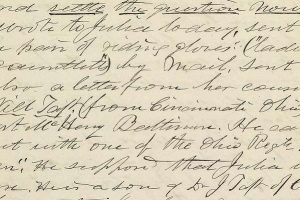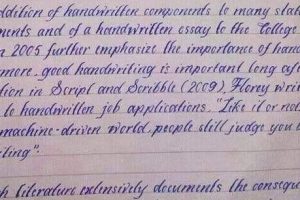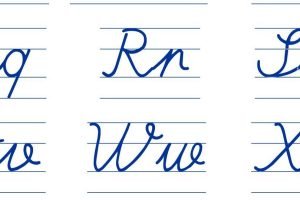Cursive handwriting is a style of writing where the letters are connected to form a flowing script. While it has been largely replaced by digital communication, cursive remains an important skill that can improve fine motor skills, memory retention, and creativity. In this article, we’ll take a closer look at the cursive letters alphabet and provide tips on how to improve your cursive handwriting.
What is the Cursive Letters Alphabet?
The cursive letters alphabet is a set of 26 letters that are written in a flowing, connected script. Each letter is designed to connect to the letters that come before and after it, allowing for faster and more efficient writing. While cursive is not as commonly used as it once was, it remains an important skill for many reasons.
Why Learn the Cursive Letters Alphabet?
Learning the cursive letters alphabet has many benefits, including improved fine motor skills, increased memory retention, and enhanced creativity. Additionally, cursive handwriting can be an important skill in certain professional settings, such as signing legal documents or writing formal letters.
How to Write the Cursive Letters Alphabet
To write the cursive letters alphabet, start by practicing the basic strokes that make up each letter. These strokes include the upward stroke, the downward stroke, the loop stroke, and the hook stroke. Once you have mastered these strokes, you can begin practicing individual letters.
Begin with lowercase letters, as they are typically easier to write than uppercase letters. Start with letters that have a similar shape, such as “a”, “c”, and “e”. As you become more comfortable with these letters, you can move on to more complex letters such as “g”, “j”, and “q”.
Once you have mastered the lowercase letters, you can move on to uppercase letters. Uppercase letters typically have more loops and curves than lowercase letters, so they can be more difficult to write. Start with simple letters such as “L”, “T”, and “E”, then move on to more complex letters like “S”, “B”, and “F”.
Tips for Improving Your Cursive Handwriting
Improving your cursive handwriting takes practice and dedication, but there are several tips that can help you improve more quickly.
1. Practice regularly: Like any skill, cursive handwriting requires regular practice to improve. Set aside time each day to practice your handwriting, even if it’s just for a few minutes.
2. Focus on consistency: Consistency is key to achieving beautiful cursive handwriting. Pay attention to the size, shape, and spacing of your letters, and strive for uniformity throughout your writing.
3. Use guidelines: Guidelines can help you maintain consistency and avoid uneven lettering. Use lined paper or create your own guidelines with a ruler and a pencil.
4. Pay attention to posture: Your posture can affect the quality of your handwriting. Sit up straight and position yourself at a comfortable distance from your writing surface. Avoid slouching or leaning too close to the page, as this can cause strain and reduce the clarity of your writing.
5. Experiment with different styles: There’s no one “right” way to write cursive letters. Experiment with different styles and techniques until you find the one that best suits your personality and preferences.
Conclusion
In conclusion, cursive writing is an important skill to learn and master. It offers numerous benefits, including improved fine motor skills, cognitive development, and personal expression. By practicing the cursive alphabet and developing your own personal style, you can enhance your communication skills and leave a lasting impression on those who read your handwriting. Remember to choose the right tools, practice regularly, pay attention to posture and consistency, experiment with different styles, and pay attention to details to improve your cursive handwriting. Happy writing!









Add Comment